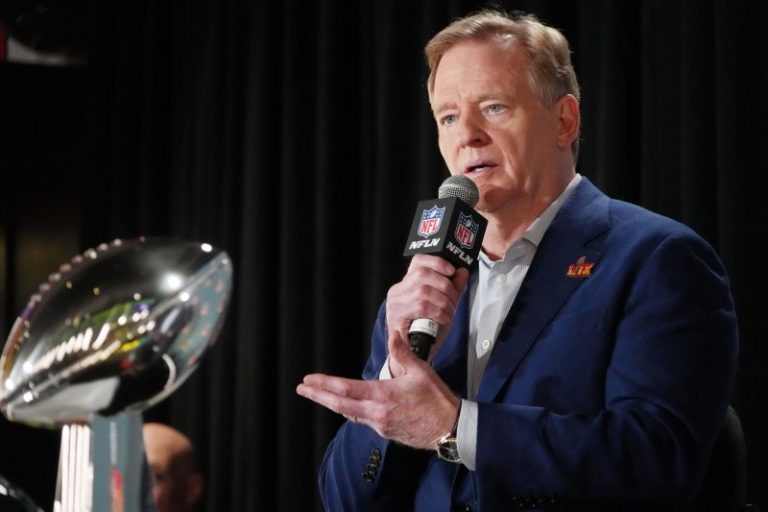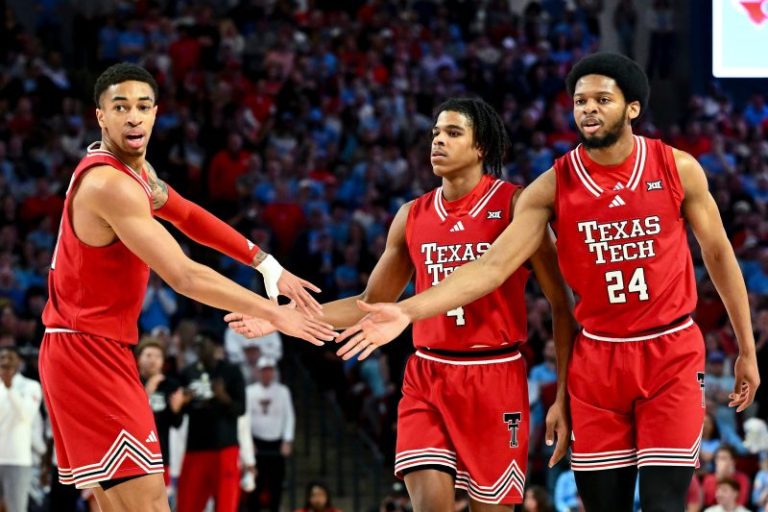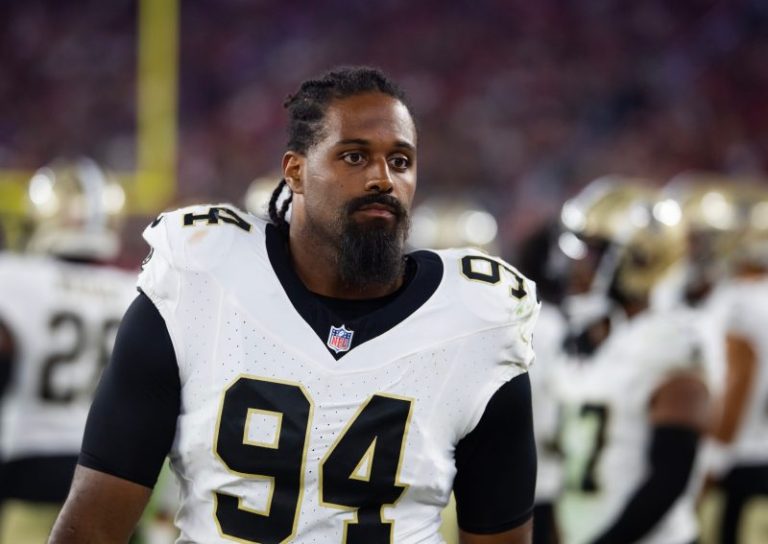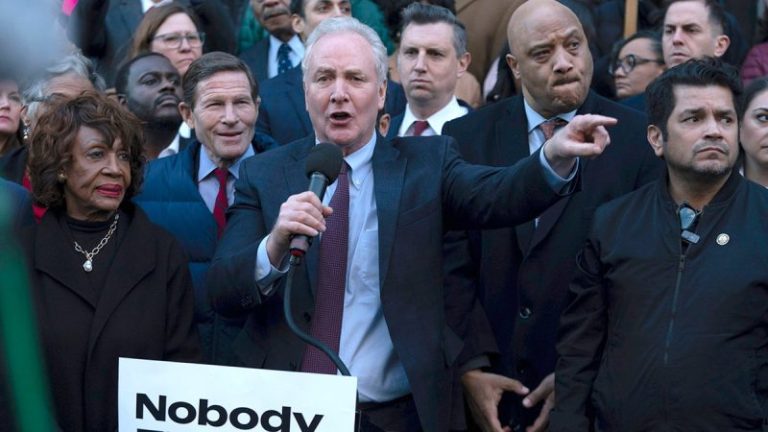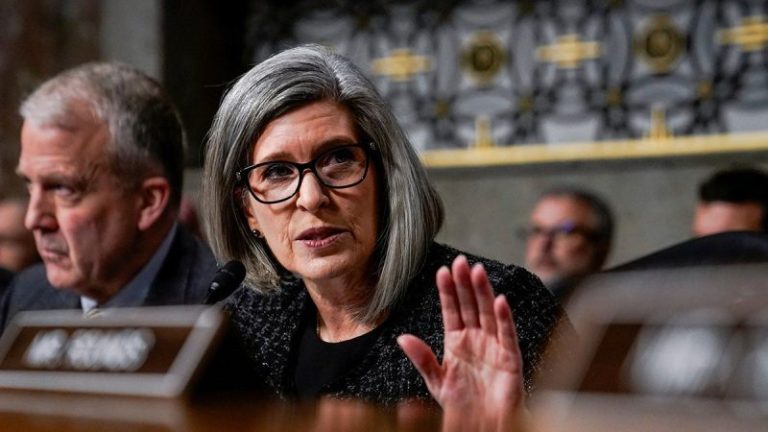NEW ORLEANS – Less than a day after Roger Goodell so eloquently amplified the NFL’s commitment to DEI to kick off another ultimate week of hype and excellence came word that the most popular sports league in the nation has decided to scrap its “End Racism” slogan from a marquee end zone spot during Super Bowl 59.
What a fumble.
Sure, you can’t hate on the “Choose Love” and “It Takes All Of Us” messaging that will be stenciled at the back of the end zones at the Caesars Superdome on Sunday – when more than 200 million viewers are expected to watch at least part of the clash between the Kansas City Chiefs and Philadelphia Eagles.
Yet it’s an opportunity blown at a time when “End Racism” is a theme that clearly needs to be expressed in our nation – and, given the global audience the NFL efforts to grow, needs to be coming from our nation.
That’s doubly true when considering another bit of pregame news that surfaced on Tuesday: President Donald Trump is coming.
NFL STATS CENTRAL: The latest NFL scores, schedules, odds, stats and more.
Trump, who irresponsibly and hatefully blamed DEI for the mid-air collision near Ronald Reagan Washington National Airport last week that cost the lives of 67 people while heroic first responders were still recovering bodies from the Potomac River, will be the first sitting president to attend a Super Bowl.
That’s one person who needs to see “End Racism” messaging – if only as a subliminal reminder of social responsibility. But obviously as something even deeper.
The NFL maintains its Super 59 end zone slogans acknowledge a series of deadly national tragedies this year – including the crash of a medical jet in Philadelphia, the devastating wildfires in Los Angeles, the New Year’s attack in the French Quarter, blocks from the Superdome, and of course the collision outside Washington, D.C., that involved an Army helicopter and a commercial regional jet.
Still, the NFL doesn’t have to kick aside the pointed message acknowledging racism in our society while showing respect for the other tragedies. The “End Racism” slogan has widely been part of NFL end zone imagery since 2021, when an apparent “racial reckoning” was ignited after the heinous death of a Black man, George Floyd, fueled protests and a wave of DEI actions from corporate America.
Now, with Trump back in the White House launching an attack on DEI programs and principles – and alternatively appointing some loyalists with sketchy credentials to key roles – the timing couldn’t be worse for the NFL to drop its “End Racism” slogan.
The NFL, as powerful as it is, should stand on its slogan as a matter of principle. Make a bold statement, no matter “who dat” is in the dome.
Talk about taking five steps back.
“We got into diversity efforts because we felt it was the right thing to do for the National Football League, and we’re going to continue those efforts because we’ve not only convinced ourselves, I think we’ve proven to ourselves that it does make the NFL better,” Goodell said during his state-of-the-NFL news conference on Monday, when I asked about the league’s DEI commitment in the face of the Trump administration and a trend in corporate America that has seen too many companies roll back their DEI efforts.
Goodell added: “We’re not in this because it’s a trend to get into or a trend to get out of it. Our efforts are fundamental in trying to attract the best possible talent to the NFL, both on and off the field.”
The Commissioner wasn’t speaking specifically about the change in the end zone slogan, which didn’t come to light until Tuesday morning with a report by Mike Silver in The Athletic. Goodell alluded to the Rooney Rule – which stipulates that NFL teams must interview at least two external minority candidates for head coach and general manager positions – and is one of the pillars of the league’s DEI efforts.
That’s still noble, even as debate continues about the effectiveness of the Rooney Rule and results with hirings and firings raise suspicions about commitments by some to equal opportunities.
Yet clearly, action speaks louder than words in all of this. In dropping the end zone slogan that acknowledges racism, the NFL may have inadvertently sent another message – we don’t care about it that much – to a large swath of its fan base that is too often marginalized.
Goodell, for all that he has done to diversify the ranks at league headquarters and to support DEI programs, should know better.
Remember, the NFL is constantly watched and scrutinized. When it engages as a socially responsible corporate leader – or not – that gets noticed, too.
Then again, maybe it’s just a coincidence that we’ve learned of the “End Racism” slogan dump just when Trump happens to be pegged to attend the Super Bowl. Or just plain dumb luck.
Regardless, it’s bad optics for the NFL.
It makes me wonder: Is the NFL threatened by Trump? If you think the league – with its massive TV ratings and soaring franchise values – should feel insulated from any attacks from the president, think again.
Remember Colin Kaepernick and the national anthem protests?
When Trump, during a rally, blasted players for their protests, it illustrated just how big of a target the NFL can be. Now it’s fair to wonder whether the league is sensitive to the possibility of further attacks.
In 2024, the NFL was one of more than a dozen companies targeted by America First Legal, founded by Stephen Miller, which charged that the DEI programs were unlawful and discriminatory against white people – and requested that the Equal Employment Opportunity Commission (EEOC) investigate the league.
That action, which included a letter to Goodell, didn’t move the needle with the NFL.
Yet Miller, an advisor during the first Trump administration, is now deputy chief of staff and U.S. Homeland Security advisor. Given the anti-DEI actions and rhetoric in play from the White House, it’s not a stretch to think that Goodell and Co. might be a bit nervous about the possibility of an attack against the Rooney Rule, a key component of larger DEI strategies for the league.
True, it takes all of us. And we need to choose love. Yet in this social environment, there are some messages – especially as attached to the event that will draw the biggest audience of the year – that the NFL should not be afraid to express.
Follow Jarrett Bell on X @JarrettBell.
This post appeared first on USA TODAY



